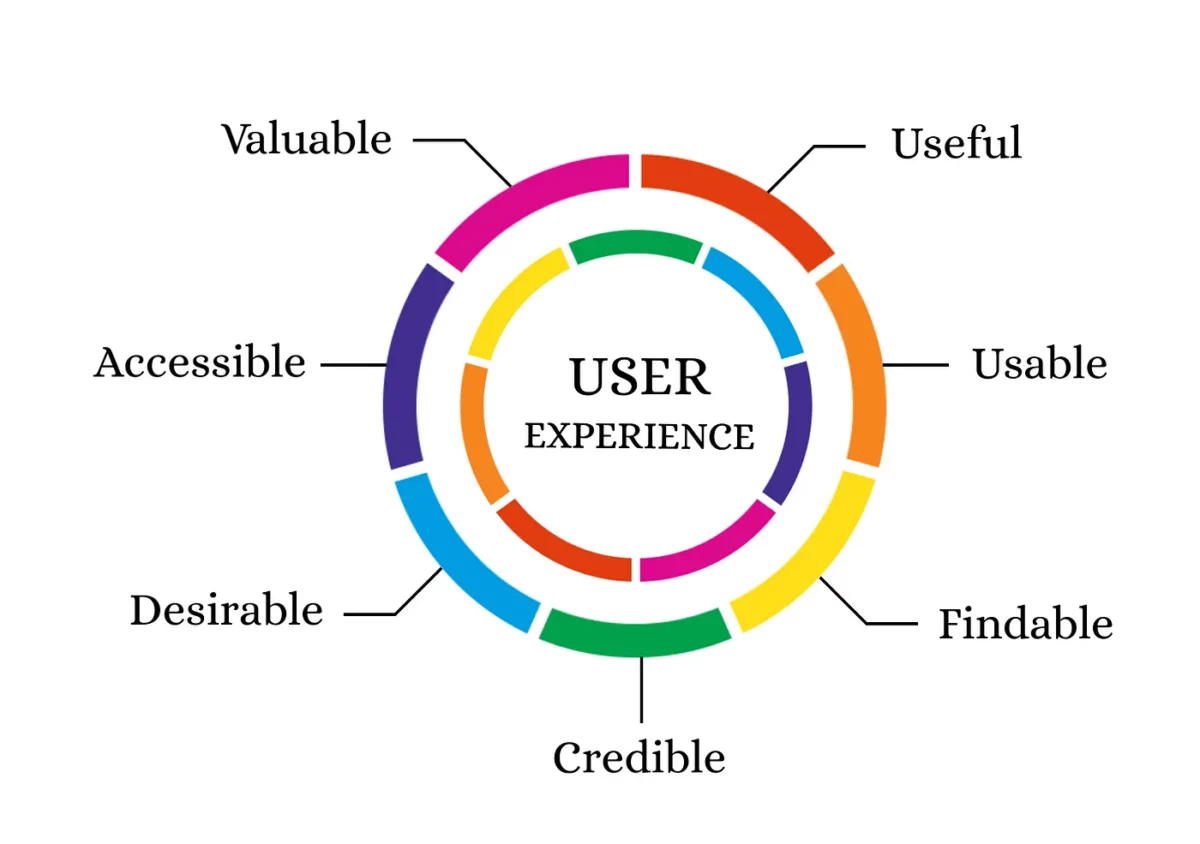The UX conversation in the last year or so has shifted from “should we use AI?” to “how do we use it effectively?” And with good reason.
Research shows over half of design and research teams now use AI, primarily for speed and scale. Meanwhile, SaaS companies that adopt AI in product workflows are reporting significant improvements in retention and conversion. Still, speed alone doesn’t solve usability challenges — it just accelerates them if you’re not careful.
The real advantage lies in pairing AI with human insight, letting machines handle the scale while designers preserve empathy.
This guide breaks down 9 actionable ways design teams can leverage AI in UX design, ensuring your product experience stays on top.
So let’s get started.
- Analyzing Large Volumes of User Data
One of the realities of modern UX research is that teams are drowning in data. Every usability test, NPS survey, or product analytics tool churns out transcripts, video recordings, heatmaps, and clickstream data. In theory, this is gold—direct evidence of how people behave with your product.
In practice, it’s overwhelming. A single round of usability testing with 20 participants can generate hundreds of pages of notes and hours of recordings. Multiply that by multiple product teams and release cycles, and you quickly run into analysis paralysis.
This is where platforms like Loop11 come in, offering features that leverage AI for deep user data analysis. For instance, their AI Insights feature can automatically categorize open-ended responses, identify sentiment, and pinpoint key themes from qualitative data, saving countless hours of manual review.
This means designers can quickly understand the “why” behind user actions, allowing them to address pain points and capitalize on opportunities with greater accuracy and speed.
- Optimizing Design Prototyping and Testing
AI is transforming the prototyping and testing phases of UX design by making them faster, more iterative, and more insightful. AI-powered tools can generate multiple design variations based on predefined parameters and user data, allowing designers to explore a wider range of solutions more efficiently.
This reduces the time spent on manual ideation and allows for rapid experimentation with different layouts, color schemes, and interaction flows.
Furthermore, AI can analyze user interactions with prototypes in real-time, identifying areas of confusion or friction that might be missed in traditional testing methods.
Tools can track eye movements, click paths, and even emotional responses, providing a comprehensive understanding of how users perceive and interact with a design.
This accelerated feedback loop empowers designers to refine prototypes quickly, leading to more robust and user-friendly final products.
- Improving UX & Product Copy
Effective communication is a cornerstone of good UX, and AI is proving invaluable in crafting clear, concise, and engaging copy for products and user interfaces. AI-powered writing assistants can analyze existing content for readability, tone, and consistency, suggesting improvements that enhance the user experience.
They can also generate initial drafts of microcopy, error messages, and onboarding text, ensuring a consistent voice and brand message across all touchpoints. Beyond basic grammar and style, AI can also optimize copy for different user segments and contexts.
By understanding user demographics, behaviors, and even emotional states, AI can help designers tailor language that resonates more deeply with specific audiences, making interactions feel more personalized and intuitive.
This ensures that every word on a product contributes to a seamless and positive user journey.
- Adding UI Elements & Branding
AI dramatically streamlines the process of adding and refining UI elements while ensuring absolute brand consistency. AI-powered design tools can automatically generate a wide range of UI components: buttons, icons, input fields; all strictly adhering to established style guides or design systems.
This not only accelerates the initial design phase, allowing for rapid interface population with aligned elements, but also prevents design inconsistencies that can erode a cohesive visual identity.
The outcome is a more unified, professional product that enhances user confidence and navigability, a foundation further strengthened by robust user testing methods.
Moreover, AI can also help with the precise application & integration of branding. By analyzing existing brand assets like logos, imagery, and color palettes, AI functions as an intelligent brand guardian, generating suggestions or automating the placement of elements to ensure every visual decision reinforces the brand’s identity.
This frees designers from repetitive manual adjustments, allowing them to focus on strategic thinking and complex user interaction challenges, thereby ensuring a strong, consistent brand presence throughout the entire user interface and contributing significantly to an excellent user experience.
- Increasing Design Accessibility
AI holds immense potential for making digital products more accessible to a wider range of users. AI-powered tools can analyze designs for accessibility compliance, identifying issues such as insufficient color contrast, small font sizes, or lack of proper alt-text for images.
This proactive approach helps designers address accessibility concerns early in the design process, rather than as an afterthought.
Furthermore, AI can facilitate the creation of adaptive interfaces that cater to individual user needs. For example, AI can automatically generate captions for videos, provide audio descriptions for visual content, or suggest alternative input methods for users with motor impairments.
With the right AI tools at their disposal, designers can ensure that their products are inclusive and usable by everyone, regardless of their abilities.
- AI-Enhanced User Research
AI is revolutionizing user research by automating tedious tasks and uncovering deeper, more nuanced insights. AI can analyze qualitative data from interviews, focus groups, and open-ended surveys to identify recurring themes, sentiment, and key user needs.
This significantly reduces the manual effort involved in synthesizing qualitative data, allowing researchers to spend more time interpreting findings and less time sifting through raw information.
Beyond qualitative analysis, AI can also predict user behavior based on historical data, helping researchers anticipate future trends and identify potential pain points before they even arise.
This proactive approach to user research empowers designers to create products that are not only responsive to current needs but also future-proofed against evolving user expectations.
- Customizing the User Journey
One of AI’s most revolutionary contributions to UX design is its unparalleled ability to personalize the user journey for each individual, moving far beyond generic personalization to create a truly bespoke and intuitive experience.
By continuously analyzing vast amounts of user data: including behavior patterns, explicit preferences, demographics, and even real-time contextual cues, AI algorithms can dynamically adjust content, recommendations, and even UI elements.
This sophisticated adaptation ensures that every interaction feels highly relevant and deeply engaging, making the user feel genuinely understood and valued by the product.
For instance, an eCommerce platform can leverage AI to not only recommend products based on past purchases and browsing history but also to dynamically reorder search results, highlight promotions, or even modify layout elements based on a user’s perceived intent or emotional state.
Similarly, a streaming service can tailor content suggestions to individual viewing habits and predict future interests, enhancing satisfaction and engagement. This profound level of customization, informed by granular data analysis, directly translates into improved key metrics such as increased engagement, higher conversion rates, and greater customer loyalty.
Understanding user behavior at a deeper level is critical for user retention, and leveraging AI significantly enhances a designer’s ability to craft those customized user journeys at scale, providing genuine, user-centric experiences.
- Enhancing UI Design
AI is fundamentally changing how UI designers approach their craft, moving beyond static designs to intelligent, responsive interfaces. AI-powered tools can assist in generating innovative UI layouts, recommending optimal spacing and element positioning based on user interaction data.
This leads to more aesthetically pleasing and functionally efficient designs that are tailored to how users naturally interact with digital products.
Moreover, AI can help designers explore a wider range of design possibilities by rapidly generating variations and mockups. This allows for quicker iteration and experimentation with different visual styles and interaction patterns, ultimately leading to more sophisticated and user-friendly interfaces.
By offloading repetitive tasks to AI, UI designers can then focus on higher-level creative problem-solving.
- Boosting Efficiency & Productivity
Ultimately, one of the greatest benefits of integrating AI into UX design is the significant boost in efficiency and productivity it offers.
By automating repetitive and time-consuming tasks; from data analysis to content generation and even basic UI design, AI frees up designers to focus on more strategic, creative, and complex problem solving.
This allows design teams to deliver higher quality work in less time, accelerating the entire product development lifecycle.
Furthermore, AI also arms designers with powerful insights and tools that allow them to make more informed decisions, reducing the need for costly rework and improving the overall success rate of design projects.
The combination of increased speed and enhanced quality ensures that UX teams can stay agile, innovative, and consistently deliver exceptional user experiences amidst all the competition.
AI-Friendly UX Design Tools: Add Them to Your Toolstack, Now!
AI has massively transformed how the UX design process looks in 2025. It not only helps improve a designer’s efficiency, but also helps them bridge the gap between designing, researching & launching a product.
Given below, is a list of the top AI-powered UX design tools:
- Loop11
Loop11 is a usability testing platform that now integrates AI-powered insights. It helps teams analyze large volumes of test data quickly, turning raw session recordings into actionable recommendations.
With features like automated task success reporting, clickstream analysis, and heatmaps, Loop11 reduces manual analysis time and helps identify usability bottlenecks faster. This makes it especially valuable for SaaS and enterprise teams that need to validate design changes at scale.
- Uizard
Uizard transforms the wireframing and mockup creation process through its AI-powered design generation capabilities. The tool can instantly convert rough sketches into polished wireframes, saving designers hours of manual work.
Its smart element recognition technology identifies common UI patterns and suggests improvements based on design best practices. What sets Uizard apart is its ability to learn from existing designs, allowing it to generate mockups that align with established style guides and brand identities.
The platform offers theme customization options that let designers quickly explore different visual directions without starting from scratch.
- Copy AI
Good UX is as much about words as visuals. Copy.ai uses generative AI to improve product microcopy, from button text to onboarding flows.
By analyzing tone and clarity, it helps teams test multiple variations of copy that align with user expectations. This reduces friction caused by vague instructions or confusing CTAs.
- Adobe Firefly
Adobe Firefly brings generative AI capabilities to the UX design process, allowing designers to create and modify visual elements through simple text prompts. The tool excels at generating custom graphics, icons, and UI components that match specific design requirements, reducing the need for time-consuming manual creation or stock resource hunting.
What makes Firefly particularly valuable for UX designers is its integration with the broader Adobe ecosystem, enabling seamless workflows between concept generation and production-ready assets.
The tool’s text-to-image and style transfer features help maintain visual consistency across complex projects while exploring creative variations.
- Figma AI
Figma has introduced AI-driven plugins that speed up routine tasks like generating alternate layouts, color palettes, or text placeholders.
These features empower designers to experiment with multiple variations faster, helping uncover unexpected directions that might otherwise be missed.
For distributed teams, it also ensures more consistent collaboration.
Limitations of Using AI for UX Design
Now, while AI has solved various aspects of the UX design process, there are several limitations as well, when it comes to using AI for UX design.
Here are a few you should know about:
- Bias in Data and Algorithms: A significant challenge lies in the potential for AI algorithms to inherit and amplify biases present in the training data.
If the data used to train an AI model doesn’t accurately represent diverse user groups, the AI’s outputs; whether design recommendations, personalized journeys, or content generation, can inadvertently perpetuate stereotypes or exclude certain populations.
This can lead to designs that are inaccessible, irrelevant, or even offensive to specific user segments, undermining the goal of inclusive UX. - Lack of Human Empathy and Intuition: While AI excels at processing data and recognizing patterns, it inherently lacks genuine human empathy, intuition, and the ability to understand nuanced emotional context.
UX design often requires a deep, qualitative understanding of human needs, desires, and frustrations that go beyond quantifiable metrics.
An AI might optimize for efficiency or conversion rates but could miss the subtle emotional cues or cultural sensitivities crucial for creating truly delightful and meaningful user experiences. - Explainability and Trust (The “Black Box” Problem): Many advanced AI models, particularly deep learning networks, operate as “black boxes,” meaning their decision-making processes are complex and difficult for humans to interpret or understand.
When an AI generates a design suggestion or makes a recommendation, it can be challenging for UX designers to comprehend why a particular choice was made.
This lack of explainability can hinder trust, make it difficult to debug or refine AI outputs, and limit a designer’s ability to learn and evolve their own skills alongside the AI. - Over-reliance and Deskilling: There’s a risk that an over-reliance on AI tools could lead to a “deskilling” of UX designers.
If AI automates too many creative or analytical tasks, designers might become less adept at fundamental skills like qualitative research interpretation, critical thinking, or innovative problem-solving.
While AI should augment human capabilities, not replace them, striking this balance is crucial to ensure designers remain core to the creative process and continue to develop their expertise. - Ethical Considerations and Privacy Concerns: The extensive data collection required to train and power AI in UX raises significant ethical and privacy concerns. Users may be uncomfortable with the depth of analysis into their behaviors, preferences, and demographics.
Designers must navigate the ethical implications of using AI to predict and influence user behavior, ensuring transparency, obtaining informed consent, and safeguarding sensitive user data to maintain trust and adhere to evolving privacy regulations. - Integration Complexities and Cost: Implementing AI tools and integrating them effectively into existing UX workflows and tech stacks can be complex and costly. It often requires significant investment in specialized software, infrastructure, data scientists, and training for design teams.
Furthermore, achieving seamless interoperability between various AI tools and traditional design software can be a technical hurdle, potentially slowing down adoption and limiting the full potential benefits if not managed carefully.
Conclusion
Seeing how things have rapidly evolved over the past year or so, it’s safe to say: AI is no longer a ‘futuristic’ add-on, but is actively reshaping how UX and product teams research, prototype & deliver digital experiences.
From analyzing mountains of user data to personalizing journeys at scale, AI makes our work faster and often sharper.
But as we’ve seen, it also comes with blind spots: bias, privacy concerns, and the risk of relying too heavily on automation. The key is balance. Let AI handle the heavy lifting: data crunching, testing, rapid iterations, while you bring the empathy, context, and creativity that machines can’t replicate.
That mix is what will keep your UX work ahead of the curve, improving user retention & building more robust, habit-forming products.
- 8 Key UX Research Trends Shaping 2025 (and What to Watch in 2026) - November 10, 2025
- 9 Ways to Use AI for UX Design & Stay Ahead of the Curve - October 20, 2025
- The Iceberg UX Model: Designing for AI-First Interfaces - September 9, 2025
![]() Give feedback about this article
Give feedback about this article
Were sorry to hear about that, give us a chance to improve.
Error: Contact form not found.




